 W
WThe prehistory of Egypt spans the period from the earliest human settlement to the beginning of the Early Dynastic Period around 3100 BC, starting with the first Pharaoh, Narmer for some Egyptologists, Hor-Aha for others, with the name Menes also possibly used for one of these kings. This Predynastic era is traditionally equivalent to the final part of the Neolithic period beginning c. 6000 BC and ending in the Naqada III period c. 3000 BC.
 W
WThe Amratian culture, also called Naqada I, was a culture of prehistoric Upper Egypt. It lasted approximately from 4000 to 3500 BC.
 W
WFlint jewelry was known in the prehistoric, protodynastic, and early dynastic periods of ancient Egypt. Ancient Egyptians skillfully made bracelets and armlets out of flint.
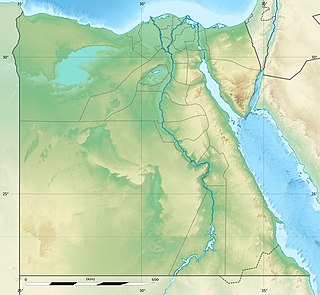 W
WThe Badarian culture provides the earliest direct evidence of agriculture in Upper Egypt during the Predynastic Era. It flourished between 4400 and 4000 BCE, and might have already emerged by 5000 BCE. It was first identified in El-Badari, Asyut Governorate.
 W
WThe title "Pharaoh" is used for those rulers of Ancient Egypt who ruled after the unification of Upper and Lower Egypt by Narmer during the Early Dynastic Period, approximately 3100 BC. However, the specific title "Pharaoh" was not used to address the kings of Egypt by their contemporaries until the rule of Merneptah in the 19th Dynasty, c. 1200 BC. Along with the title Pharaoh for later rulers, there was an Ancient Egyptian royal titulary used by Egyptian kings which remained relatively constant during the course of Ancient Egyptian history, initially featuring a Horus name, a Sedge and Bee (nswt-bjtj) name and a Two Ladies (nbtj) name, with the additional Golden Horus, nomen and prenomen titles being added successively during later dynasties.
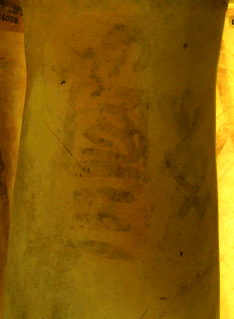 W
WCrocodile is the provisional name of a predynastic ruler, who might have ruled during the late Naqada III epoch. The few alleged ink inscriptions showing his name are drawn very sloppily, and the reading and thus whole existence of king "Crocodile" are highly disputed. His tomb is unknown.
 W
WThe El-Amra clay model of cattle is a small ceramic sculpture dating from the Predynastic, Naqada I period in Ancient Egypt, at around 3500 BC. It is one of several models found in graves at El-Amra in Egypt, and is now in the British Museum in London. The model is 8.2 centimetres high, 24.2 cm long and 15.3 cm wide. The model was made from clay, and fired at a low temperature before it was painted, however most of the paint is lost.
 W
WEl-Amrah is a site about 120 km (75 mi) south of Badari, Upper Egypt.
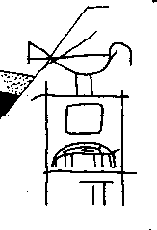 W
WElephant is the provisional name of a Predynastic ruler in Egypt. Since the incarved rock inscriptions and ivory tags showing his name are either drawn sloppily, or lacking any royal crest, the reading and thus whole existence of king "Elephant" are highly disputed.
 W
WThe prehistory of Egypt spans the period from the earliest human settlement to the beginning of the Early Dynastic Period around 3100 BC, starting with the first Pharaoh, Narmer for some Egyptologists, Hor-Aha for others, with the name Menes also possibly used for one of these kings. This Predynastic era is traditionally equivalent to the final part of the Neolithic period beginning c. 6000 BC and ending in the Naqada III period c. 3000 BC.
 W
WThe Gerzeh culture, also called Naqada II, refers to the archaeological stage at Gerzeh, a prehistoric Egyptian cemetery located along the west bank of the Nile. The necropolis is named after el-Girzeh, the nearby contemporary town in Egypt. Gerzeh is situated only several miles due east of the oasis of Faiyum.
 W
WHat Hor, also called Hat-Hor, is a possible pharaoh or king of Dynasty 0, who ruled circa 3250 BC.
 W
WThe prehistory of Egypt spans the period from the earliest human settlement to the beginning of the Early Dynastic Period around 3100 BC, starting with the first Pharaoh, Narmer for some Egyptologists, Hor-Aha for others, with the name Menes also possibly used for one of these kings. This Predynastic era is traditionally equivalent to the final part of the Neolithic period beginning c. 6000 BC and ending in the Naqada III period c. 3000 BC.
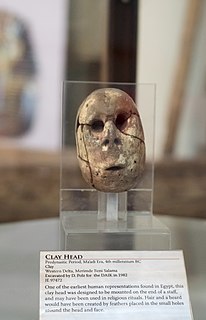 W
WThe Merimde culture was a Neolithic culture in the West Nile Delta in Lower Egypt, which corresponds in its later phase to the Faiyum A culture and the Badari culture in Predynastic Egypt. It is estimated that the culture evolved between 4800 and 4300 BC. Merimde also refers to the archaeological site of the same name.
 W
WNaqada is a town on the west bank of the Nile in Qena Governorate, Egypt. It includes the villages of Tukh, Khatara, Danfiq, and Zawayda. According to 1960 census, it is one of the most uninhabited areas and had only 3,000 inhabitants, mostly of Christian faith whom preserved the Coptic language up until 1950s.
 W
WThe Naqada culture is an archaeological culture of Chalcolithic Predynastic Egypt, named for the town of Naqada, Qena Governorate. A 2013 Oxford University radio carbon dating study of the Predynastic period, however, suggests a much later date beginning sometime between 3,800–3,700 BC.
 W
WNaqada III is the last phase of the Naqada culture of ancient Egyptian prehistory, dating from approximately 3200 to 3000 BC. It is the period during which the process of state formation, which began in Naqada II, became highly visible, with named kings heading powerful polities. Naqada III is often referred to as Dynasty 0 or the Protodynastic Period to reflect the presence of kings at the head of influential states, although, in fact, the kings involved would not have been a part of a dynasty. In this period, those kings' names were inscribed in the form of serekhs on a variety of surfaces including pottery and tombs.
 W
WNy-Hor was a possible pharaoh from the Predynastic Period. His name means "The Hunter". He may have ruled during the 31st century BCE.
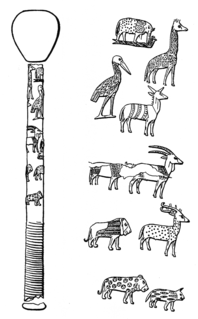 W
WThe Sayala Mace or Seyala Mace is a ceremonial mace made of gold plated wood and stone, from Predynastic Egypt. It was found by Cecil Mallaby Firth in 1910–11 at Sayala in Lower Nubia and subsequently kept in the Egyptian Museum in Cairo until it was stolen in 1920. Its later fate is unknown. The mace is especially significant for the detailed depictions of animals on its handle.
 W
WThe Scorpion macehead is a decorated ancient Egyptian macehead found by British archeologists James E. Quibell and Frederick W. Green in what they called the main deposit in the temple of Horus at Hierakonpolis during the dig season of 1897–1898. It measures 25 centimeters long, is made of limestone, is pear-shaped, and is attributed to the pharaoh Scorpion due to the glyph of a scorpion engraved close to the image of a king wearing the White Crown of Upper Egypt.
 W
WWash was possibly an ancient Egyptian predynastic ruler. His existence is disputed.